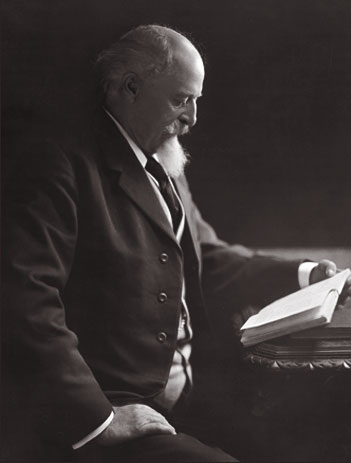
THE INTERNATIONAL HORTICULTURAL EXHIBITION.
LONDONERS indeed ought to be grateful to the promoters of this undertaking for providing them with so many pleasures.
Not content with having supplied what might appropriately be termed the Garden of Eden and "the land of the fairies," in the shape of the "beautiful and illuminated grounds, they have also arranged for additional attractions.
The band of the Garde de Republique is certainly the best thing that we ever heard in this country—except, perhaps, Strauss' orchestra.
Their masterly playing, indeed, must please anyone who has a spark of music in him. Buffalo Bill's Wild West Show seems not to have lost in interest since we first became acquainted with his troupe, for the performances are still drawing great crowds, but our wild Indian friends will now have to share their glory with another equally wild and ferocious race that are now performing wonderful feats at the Exhibition—I refer to the Cossack troop, under the commandership of Prince Makharadze.
The Prince and his comrades belong to the same branch of the great Cossack family, the Zaporogians, immortalised by Byron's "Mazeppa." Mazeppa was the hetman, or chief, of the Zaporogian community of the Cossacks of the Ukraine.
When Byron's famous hero was defeated at the battle of Boltava, the Cossacks fled to the Crimea, then Turkish territory, to avoid the vengeance of Czar Peter the Great.
Subsequently they were deported to the Kuban, and settled along the river as military colonists, to defend the Russian frontier against the marauding tribes of the Caucasus.
On this dangerous frontier, and as it is also one of the great qualities of the Cossack tribe to steal their neighbours' horses and cattle and to make away with them in the quickest manner, the qualities of horsemanship became still further developed in this tribe, so that the Kuban Cossacks quickly became in many respects the most remarkable riders in the world.
During the struggle of the Circassian mountaineers to maintain their independence against Russia, the sons of Mazeppa's Zaporogians were found to be the only Cossacks sufficiently skilful to cope with Schamyl's wild mountain horsemen on equal terms.
The descendants of Mazeppa's Cossacks were equally expert with the sword, and so in the matter of arms, as of horsemanship, met the enemy on equal terms. For many years the Cossacks of the Caucasian line were engaged in perpetual border warfare with the Circassian tribes. Graduates from this fierce, wild school of saddle and sabre, the Cossacks of the Caucasian line have long enjoyed the reputation of being the flower of that vast horde of irregular cavalry, the Cossack military colonies, that have been planted along the southern frontier of the Russian Empire from the Crimea to the Chinese border on the Pacific.
Visitors to the Wild West who have marvelled at the skill of the Indians and the Cowboys, with the bucking mustangs will marvel anew at the striking performances of these descendants of the famous "Mazeppa."
The first performance of the Cossacks at Earls Court took place on Wednesday afternoon. The men came sweeping round the arena, headed by the leader, with drawn swords, and singing a wild chant. Then dismounting, some treated the spectators to one or two of their native dances, the rest standing by, singing and clapping their hands as an accompaniment. Mounting again, and riding as hard as the horses could go, they, while in full career, picked up various articles from the ground—such as whips, handkerchiefs, &c.; while another varied the entertainment by riding on his head. Next came a Cossack game. It seems to be a matter of indifference to these hardy horsemen whether they ride with their face towards the horse's head or tail. Some, while their horse is at full gallop, raise their feet in the air, resting on their shoulders in the saddle, others ride with their face to the horse's tail while the animal is at top speed, and others pick up objects off the ground in a manner which, to onlookers, is marvellous indeed. In conclusion they charge at full speed, with drawn swords, from one end of the arena to the other. In their brown coats, with black cartridge holders on their breasts, their grey astrachan calpaks, with the Oriental pistols in the waistband, their curved sabres, their peculiar whip with short handle and long thong, these wild Eastern horsemen are quite a change from the cowboys of the "Wild West," and will, doubtless prove an attraction in a show which seems as popular as ever.


